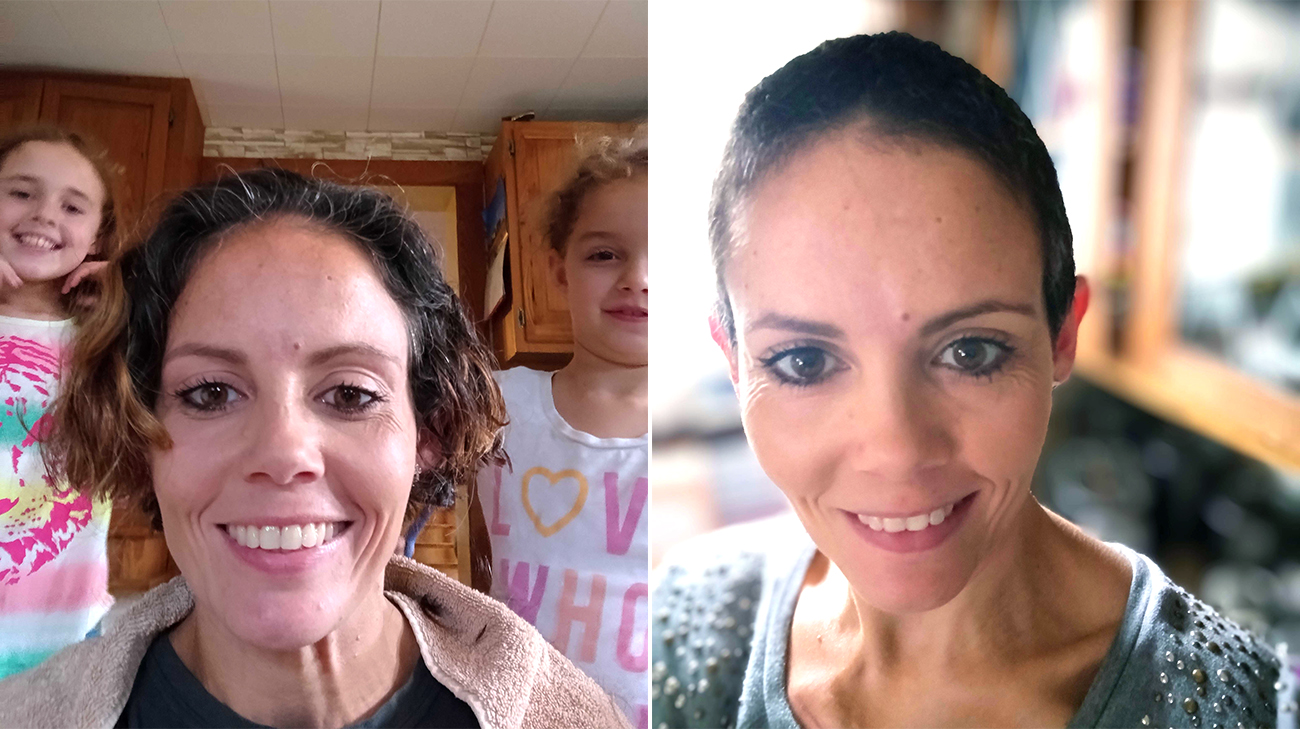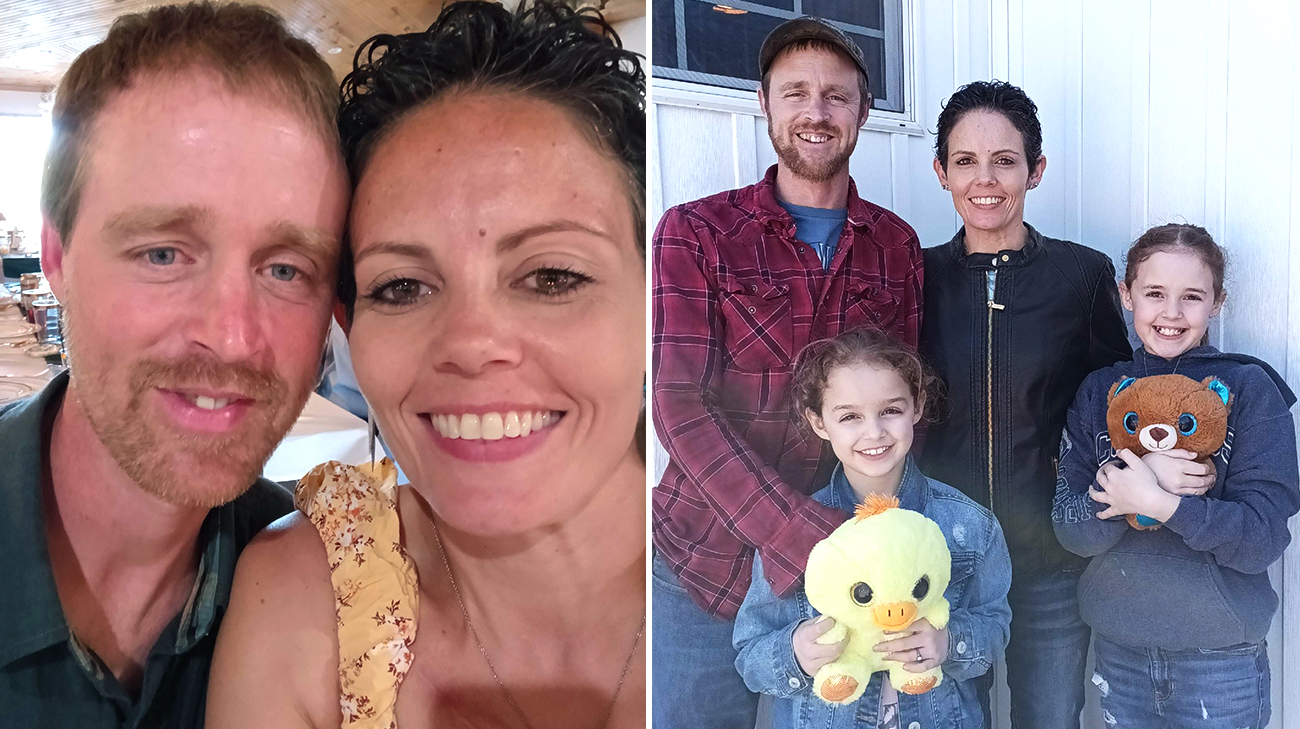
Living on a farm in a small Pennsylvania town, there’s always something keeping Nicole LaBolle busy. From gardening and canning vegetables to fishing and grooming horses, all of Nicole’s hobbies involve using her hands. She’s also a mother of two who enjoys braiding her daughters’ hair and sitting down to color a new picture with them after school. These everyday experiences that bring Nicole joy became increasingly more difficult as her Parkinson’s disease progressed.
“When I first started having tremors, I’d blame it on lack of sleep and lay off the caffeine for a while,” says Nicole of Pleasantville, Pennsylvania.
Looking back, Nicole recalls she started experiencing tremors a couple times a week when she was just 24 years old. The sensation started in her dominant right hand, impacting her ability to write, and soon traveled to other parts of her body. Nicole says her symptoms became increasingly more severe over the next few years.
“I experienced tremors daily by the time I was 27 years old. That’s when they began to affect my day-to-day life,” says Nicole.
When her tremors worsened, she started looking for answers. Nicole says her local doctors didn’t suspect Parkinson’s at first because the average age of onset is 60 years old. Although extremely rare, adults as young as 20 can develop Parkinson’s. These patients more frequently have a family history of the disease – which Nicole did not. That meant a stretch of uncertainty for Nicole until she visited a movement disorders specialist who confirmed the life-changing diagnosis.
“I was shocked when I found out I had Parkinson’s. I just had a baby, and I'm thinking, ‘How am I going to do this,’” asked Nicole, who was 28 years old at the time.
Once she received the diagnosis, Nicole started a medication regimen to control her condition. But eventually, that wasn’t enough. Even with medication, she started having trouble controlling her tremors and couldn’t carry out simple tasks like showering, getting dressed or cooking.
“It got to the point where I couldn’t do much of anything. I couldn’t tie my shoes or help my kids zip up their coats,” says Nicole. “Even trying to make a pot of coffee, I'd break the coffee pot because my arm would just go crazy. Everyday life was awful.”
Nicole, who recalls struggling to sleep because her tremors were so severe, wanted to seek out another treatment option. She ultimately came to Cleveland Clinic after her friend recommended she see neurologist Kristin Appleby, MD.
“Hour to hour, Nicole didn't know how she was going to feel. Parkinson's disease can be very unpredictable, and patients with young onset are often harder to treat with medication alone. That’s where deep brain stimulation comes in,” says Dr. Appleby.

Nicole’s daughters cut her hair ahead of the deep brain stimulation surgery. (Courtesy: Nicole LaBolle)
Deep brain stimulation is a medical procedure that involves implanting a device to deliver a mild electrical current to a specific part of the brain. The electricity in the current stimulates the brain cells in that area, which can help with Parkinson’s disease and other conditions. Dr. Appleby says deep brain stimulation acts like a pacemaker for the brain.
“The electrical stimulation changes the way brain cells signal each other to make them work more normally, or how they would if someone didn’t have Parkinson’s. It's not a cure, it does not slow the progression of the disease, but it’s another one of the tools we have to help manage the day-to-day symptoms of Parkinson’s,” says Dr. Appleby.
Ready for a new treatment approach, Nicole started taking the steps needed for deep brain stimulation with her surgeon, Andre Machado, MD, chair of Cleveland Clinic’s Neurological Institute. The procedure involves two to three surgeries that usually happen at different times. The first one or two procedures include inserting the stimulation leads into each side of the brain at the same or separate times. For the second procedure, the surgeon implants the stimulator battery, known as a pulse generator, in the upper chest. Finally, the surgical team begins the process of programming the pulse generator.
For Nicole, the deep brain stimulation process went smoothly, and she recalls feeling like a new person when the device was activated. “When they turned it on, it was instantly life changing. It was the most normal I had felt in 10 years.”
Nicole struggled with daily tremors before deep brain stimulation. Now, she rarely experiences them and drastically cut down on the medications needed to manage her symptoms. With her Parkinson’s under control, Nicole no longer struggles with everyday tasks. She’s also been able to get back to the activities she loves most from riding horses to braiding her daughters’ hair.

After undergoing deep brain stimulation, Nicole is happy to be back to riding horses with her daughters. (Courtesy: Nicole LaBolle)
“I braid their hair every day now, and I couldn't do that for a year. I’m also able to saddle up the horses again and go for a ride whenever I want. I have my independence back,” says Nicole.
Two advantages of deep brain stimulation are it’s adjustable and reversible. The device, typically located under the skin in the chest, can be adjusted during follow-up appointments with a special computer that communicates with it. Nicole continues to work closely with her care team to ensure she’s able to experience continued success with deep brain stimulation.
“I'm so grateful I got the right surgeon and underwent this procedure. I don't know what I would have done without it. It’s overwhelming at times to think about where I was a couple of years ago compared to where I am now. It’s just amazing,” says Nicole.

From camping to fishing, Nicole is excited to be able to do all the things she loves again with her family. (Courtesy: Nicole LaBolle)
The 39-year-old mother and wife now enjoys being present with her family in a way she hasn’t been able to for so long. She looks forward to making plenty of new memories as she’s able to take part in all the outdoor activities her family loves.
“My husband got back a wife he didn't have for years, and my kids now have a mom they never knew because my Parkinson’s symptoms were so bad. I’m blessed I got a second chance to enjoy life. I feel like a walking miracle,” says Nicole.
Related Institutes: Neurological InstitutePatient Stories
Man’s Carpal Tunnel Journey Highlights the Importance of Timely Treatment
Apr 29, 2024
"I was worried about losing my independence and quality of life - but the whole process from start to finish took only a matter of weeks."


